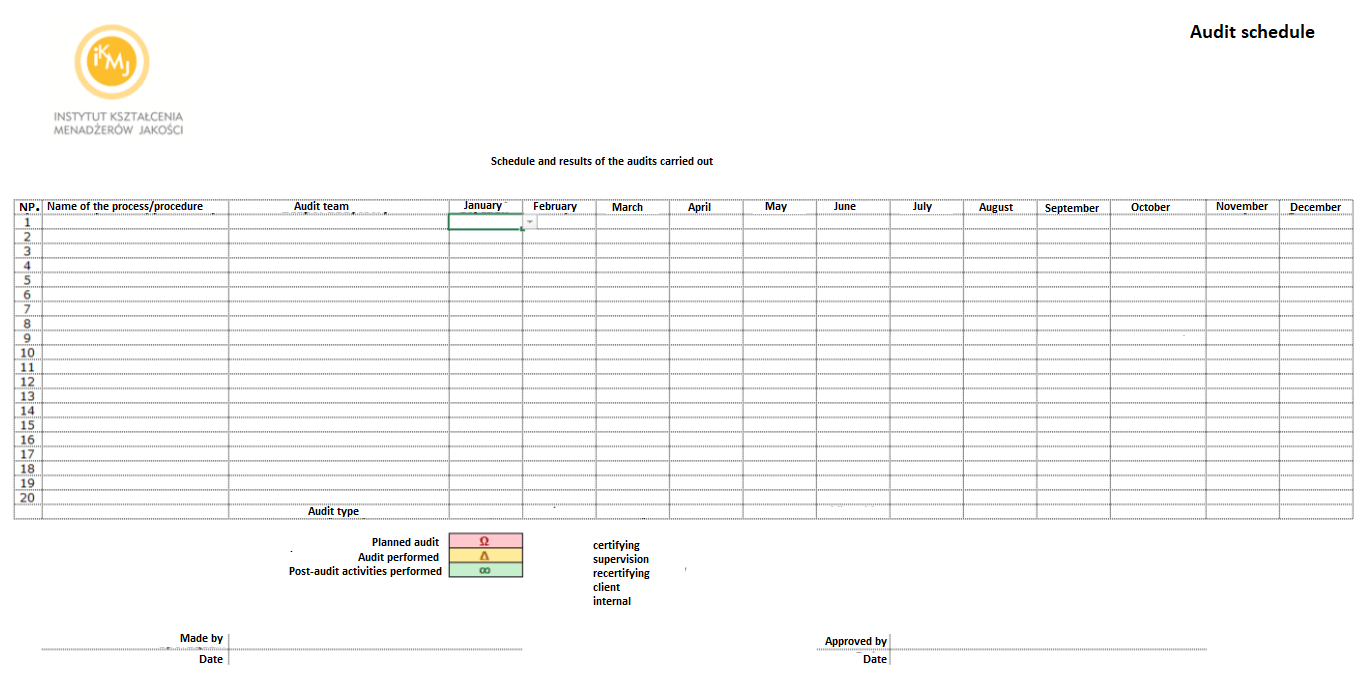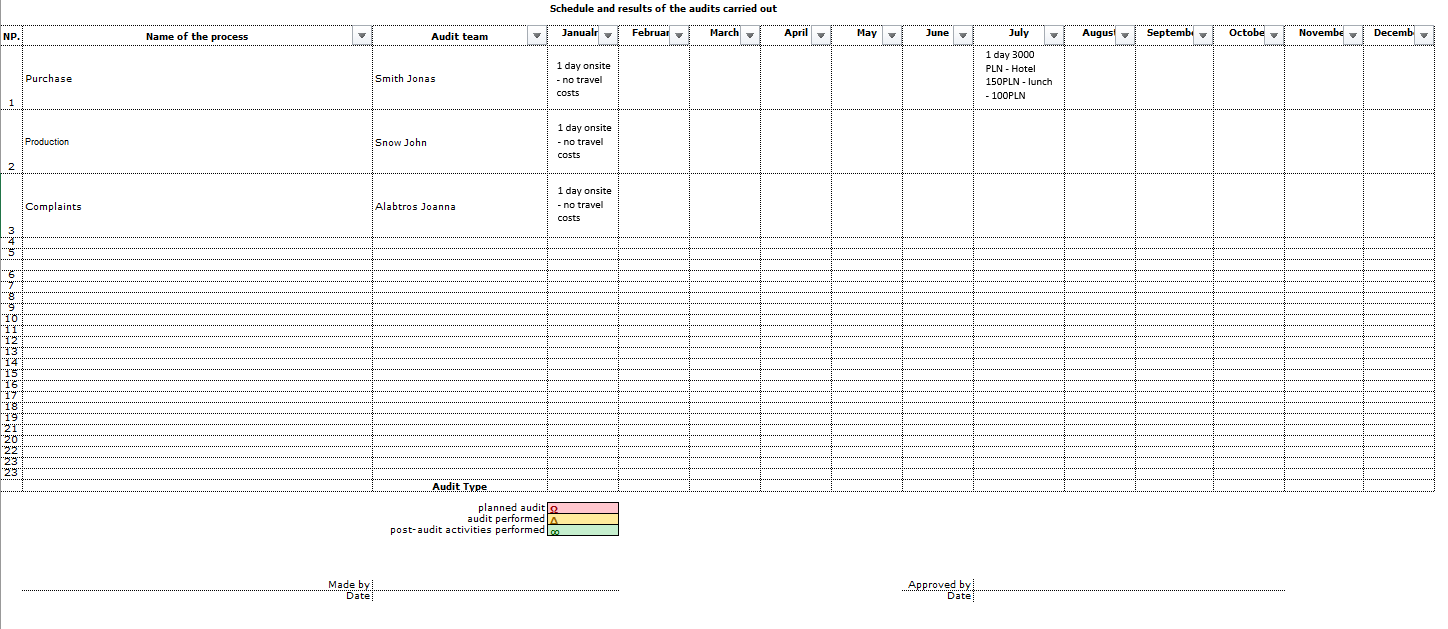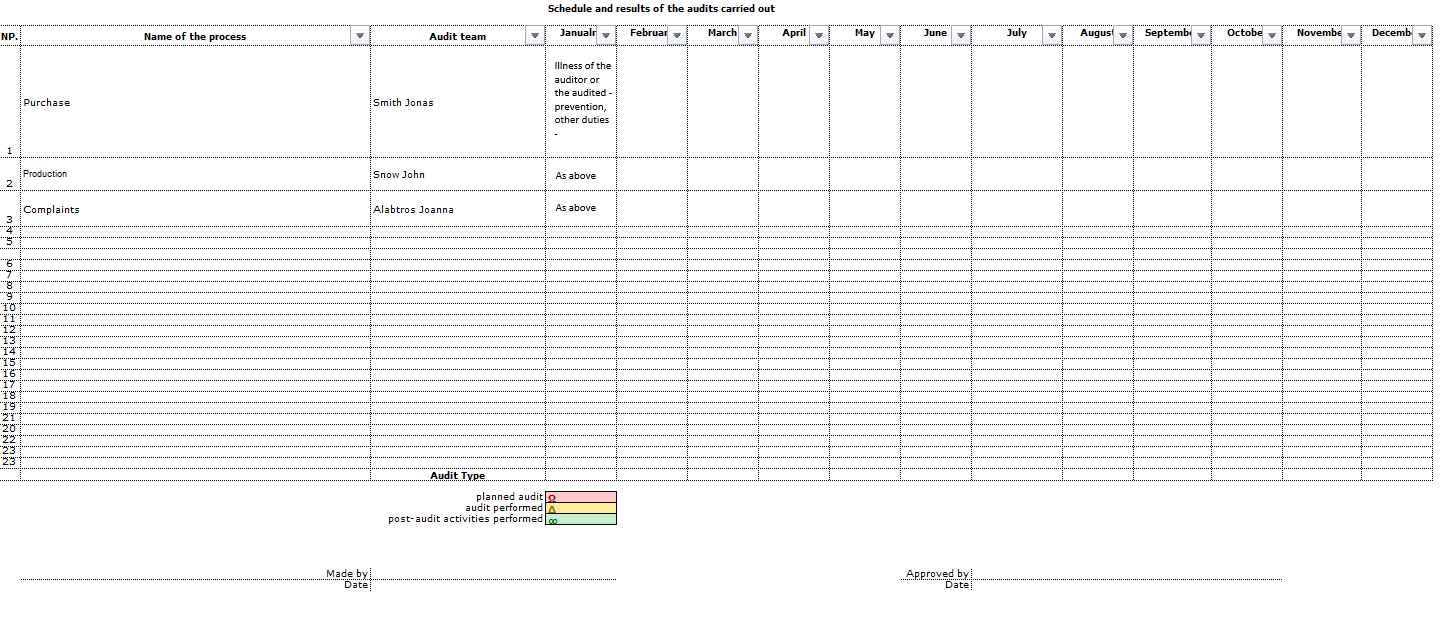Quality management system guide – How to implement ISO 9001: 2015?
An audit is an activity using to check whether our quality management system works and complies with the standard (so it can be e.g. ISO 9001, AQAP 2110).
As a result we will get answers for three basic questions:
- Do we work in accordance with the documentation of our system?
- Is our system documentation compliant with the standard?
- Are there problems (disruptions in processes otherwise known as nonconformities)?
We must also remember two things:
- in our quality management system we have to audit all processes at least once a year,
- we do not audit our own work or work in which we are involved in some way!
When we know all this, we can start planning audits for a given year (let’s do it in December for the next year). Let’s do it step by step. We will use a worksheet like this:


Step 1: We create a list of auditors, for this purpose we use a regular note, or the second sheet in the audit schedule.


Step 2: We list the processes we have in the company in the audit schedule.
Step 3: We plan and enter in the audit schedule who will audit the given process (name and surname of the auditor), and if we use auditors from a consulting company, then also the name of the company.
Step 4: We plan when the process will be audited. It is enough to mark the month in the spreadsheet and also indicate that it will be an internal audit.
Step 5: We also enter in the schedule when we are visited by the certification body or the client.
The result of our work is a pre-prepared schedule of audits.
Step 6: We determine the resource consumption related to audits. We should determine how long individual audits will take us, and thus, how long it will take for the auditors, what costs we will incur in connection with the audit logistics and for external companies, which we may hire to conduct internal or external audits. To maintain a comprehensive approach, we should do so in the audit schedule.


Step 7: Having the above data, we conduct an audit feasibility risk analysis, i.e. we list why the audits may fail or fail to take place.


We send the entire study to the approving person designated in the internal audit procedure. After obtaining approval, we communicate the audit dates to the auditors and begin to supervise their implementation.
Done, you have created and implemented an internal audit plan!

